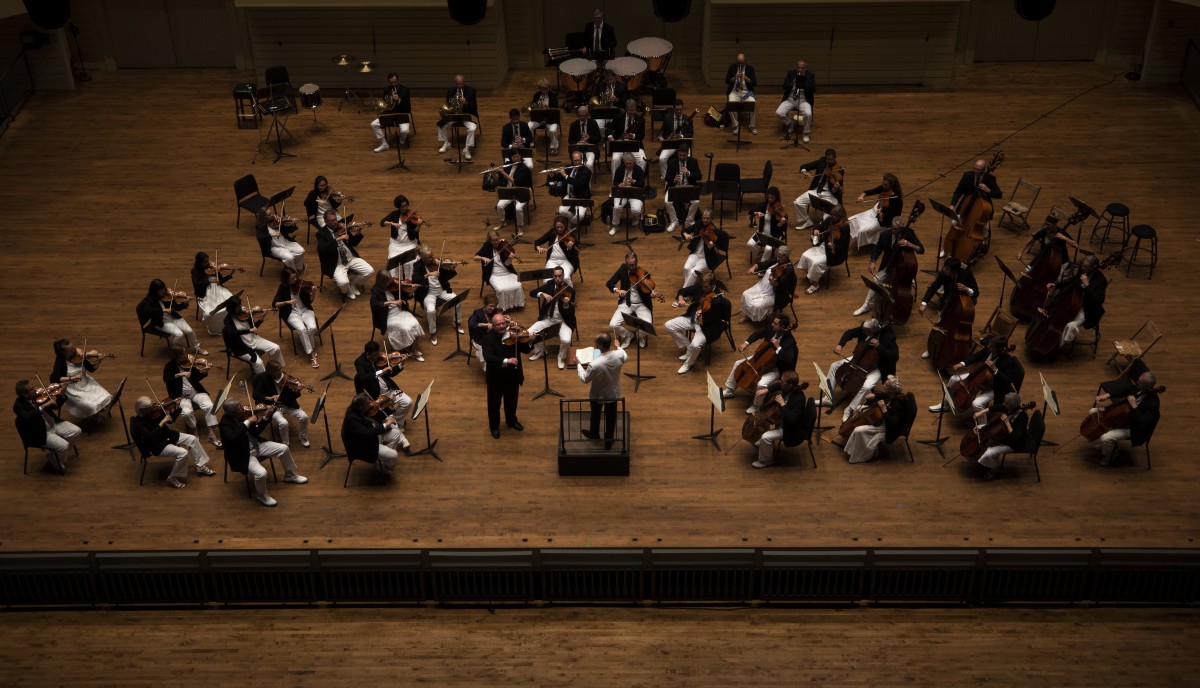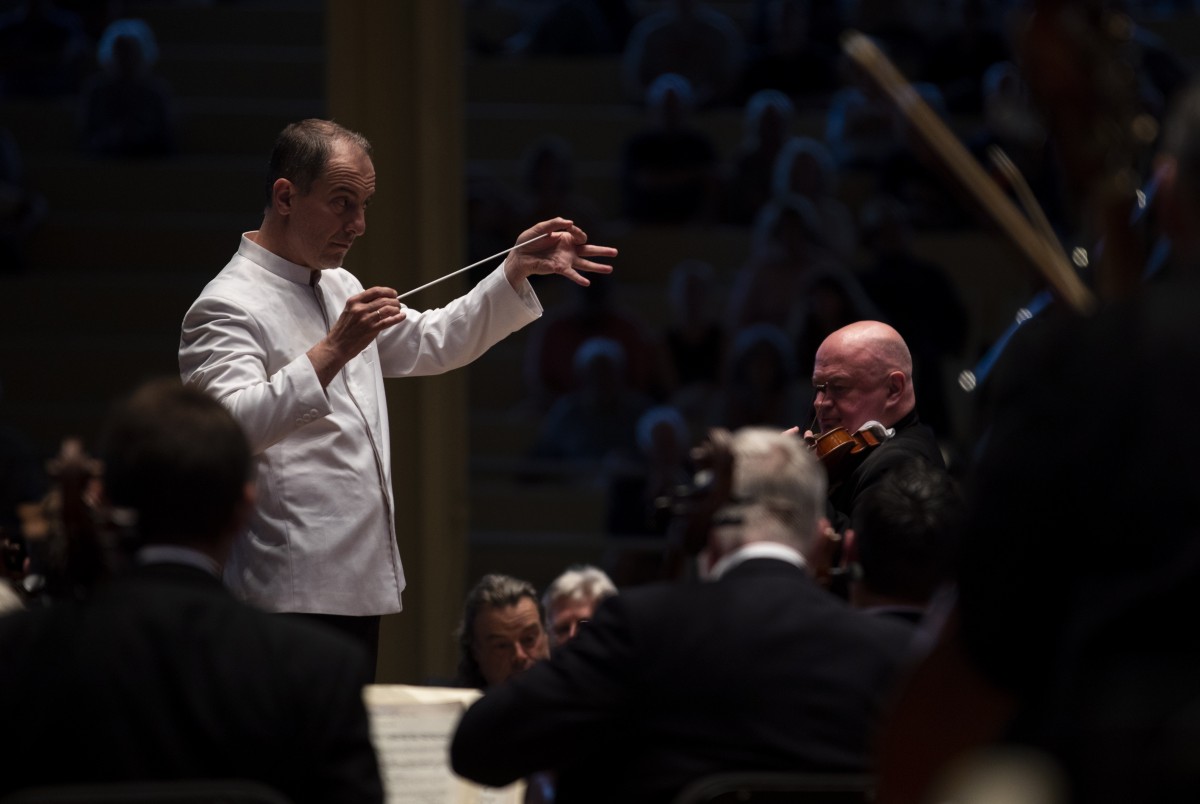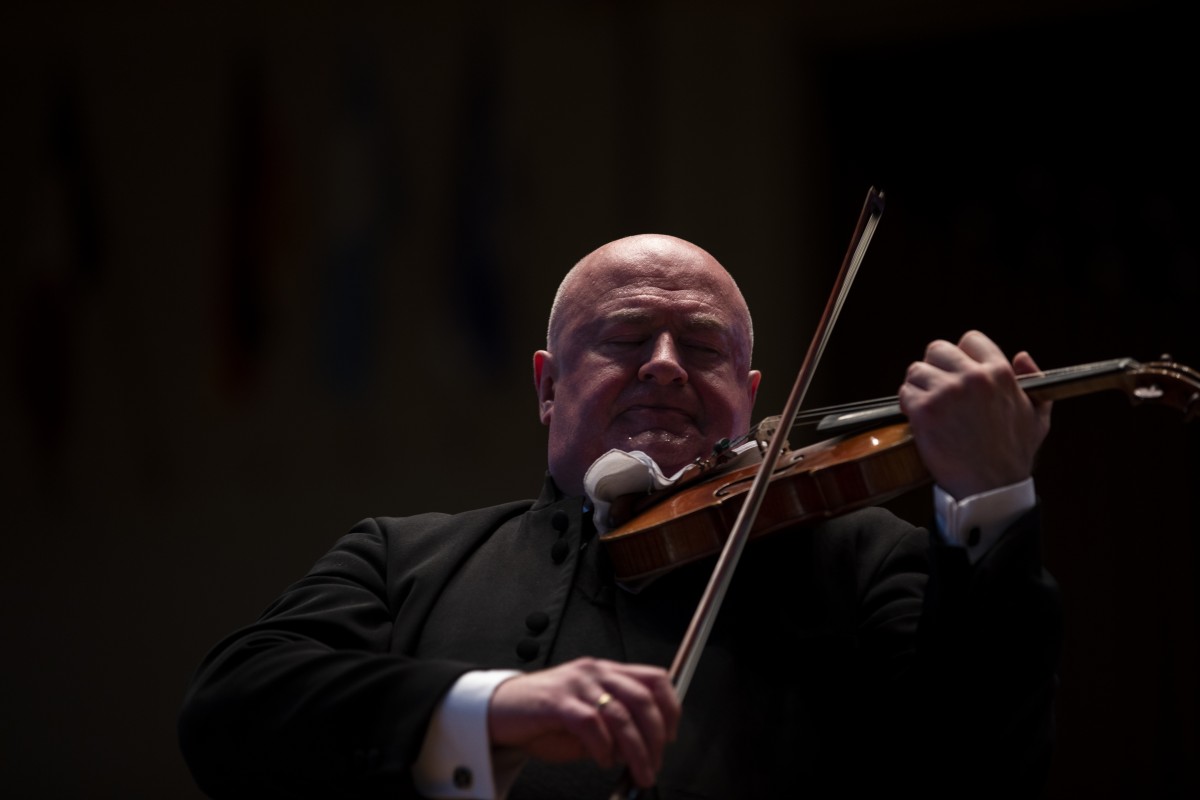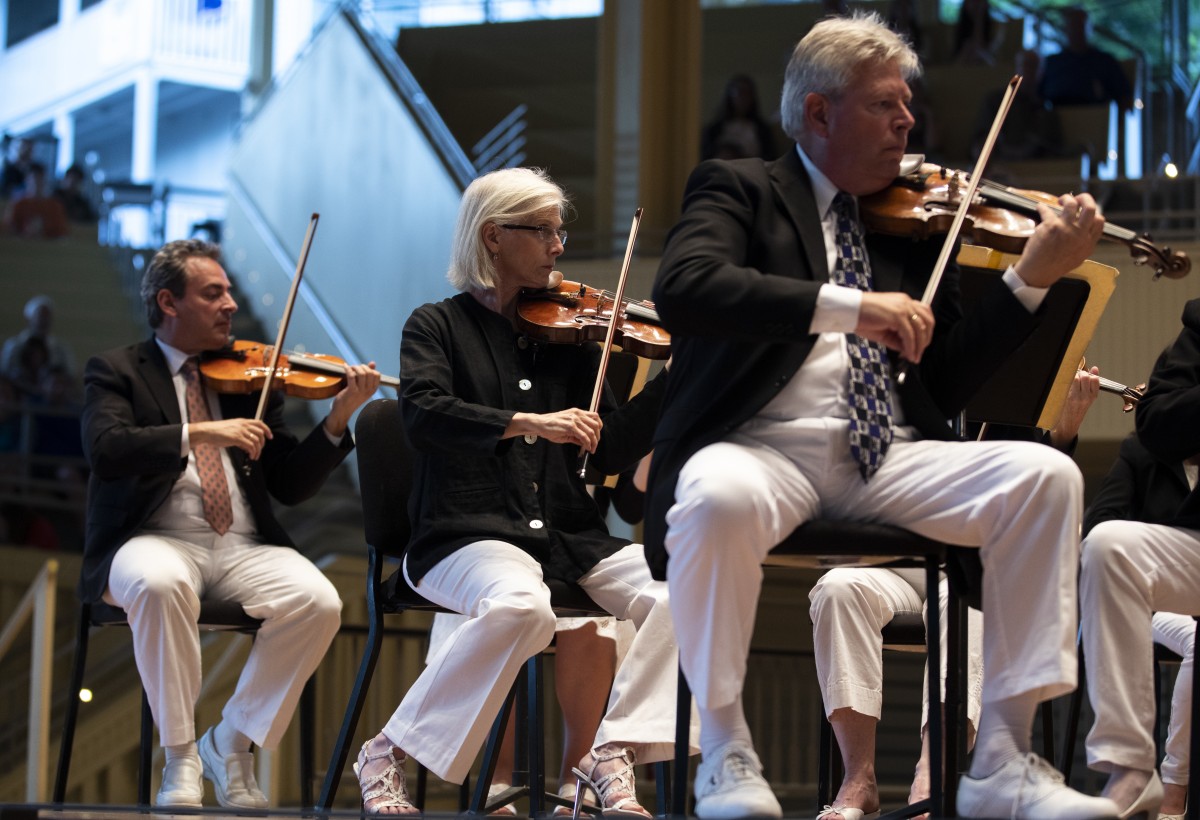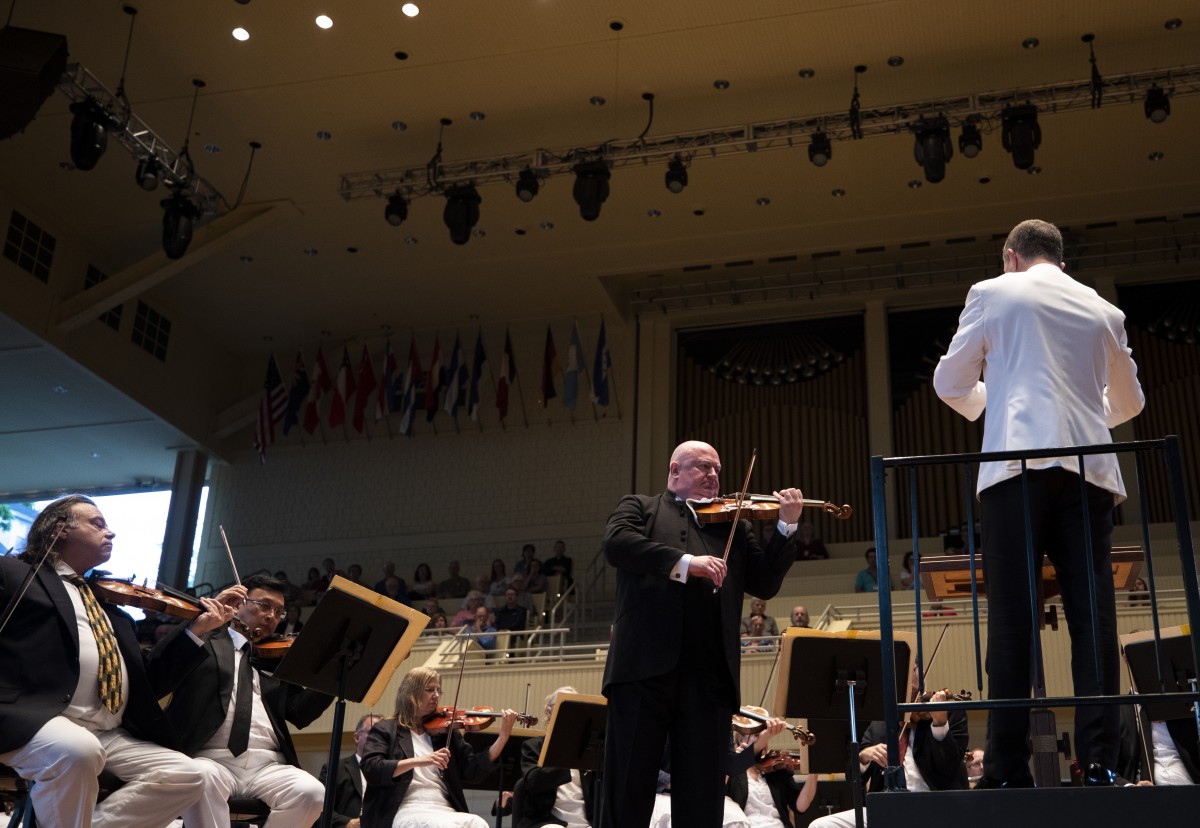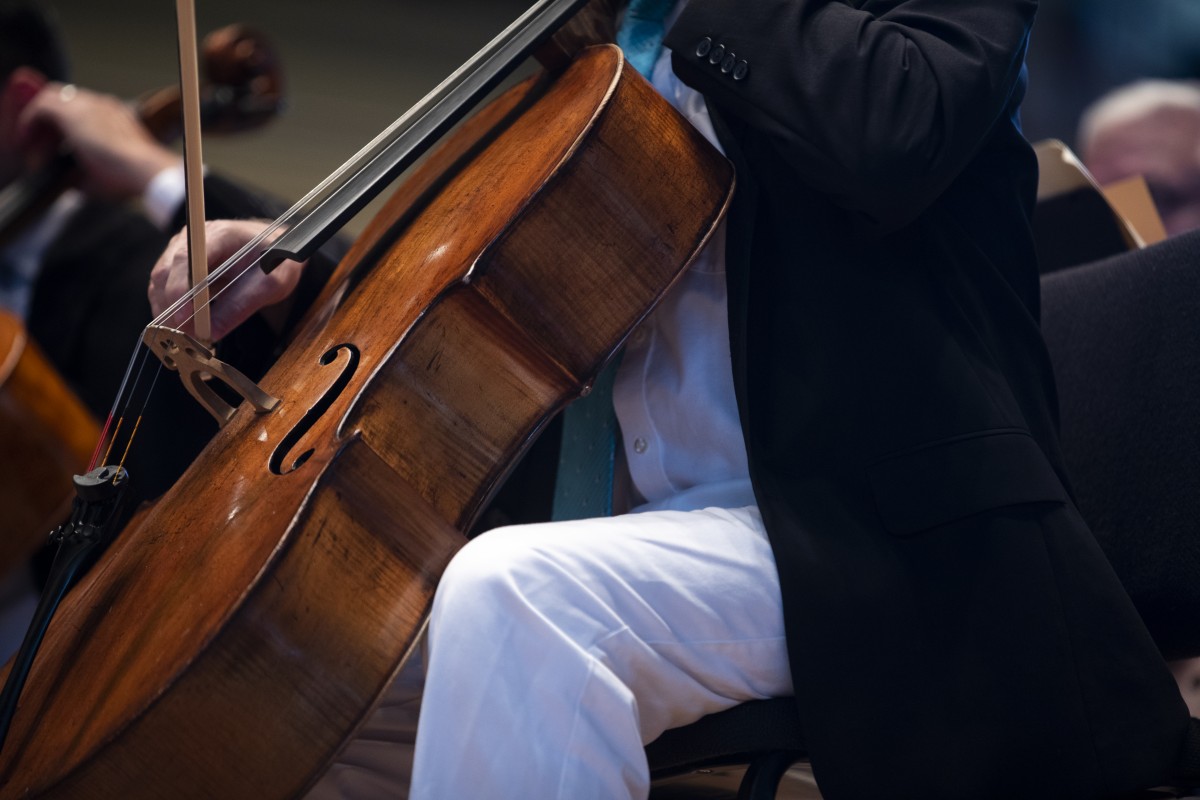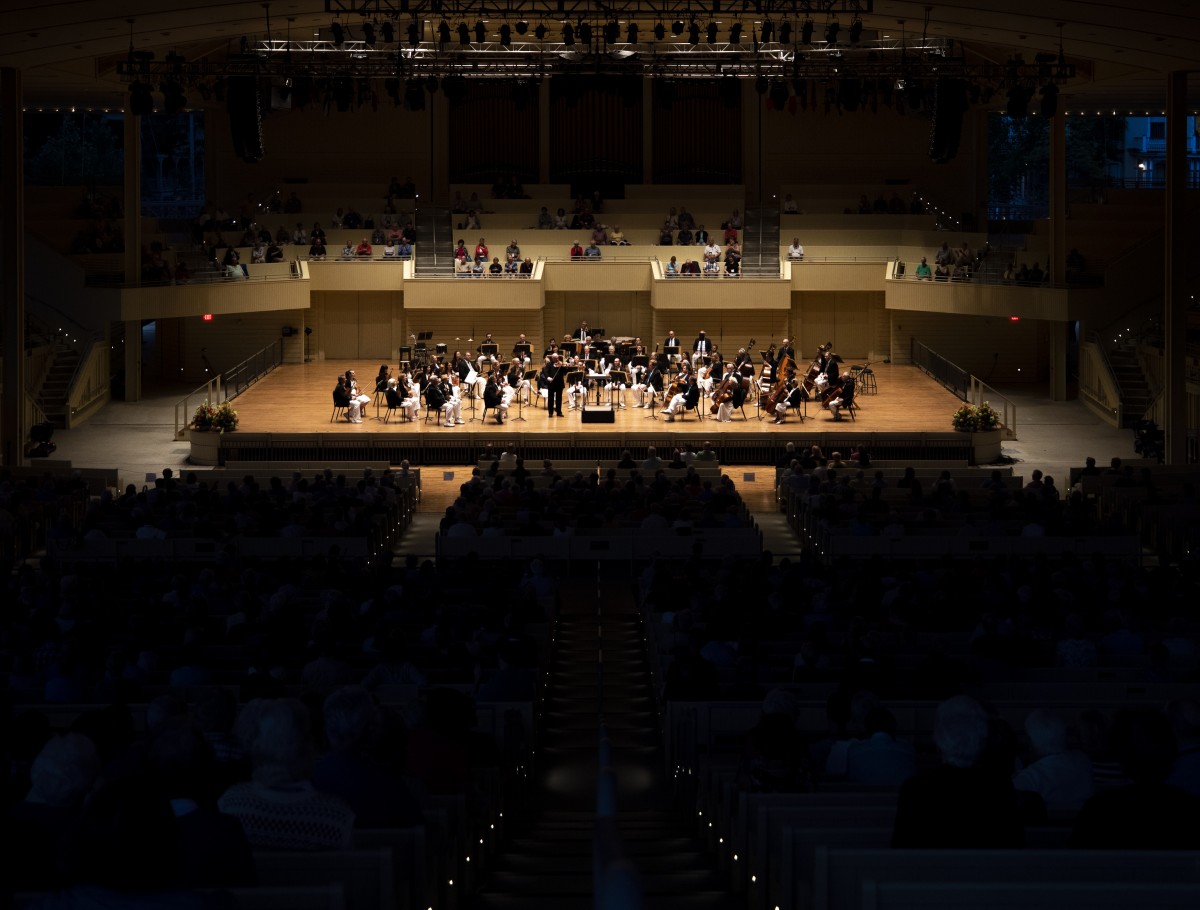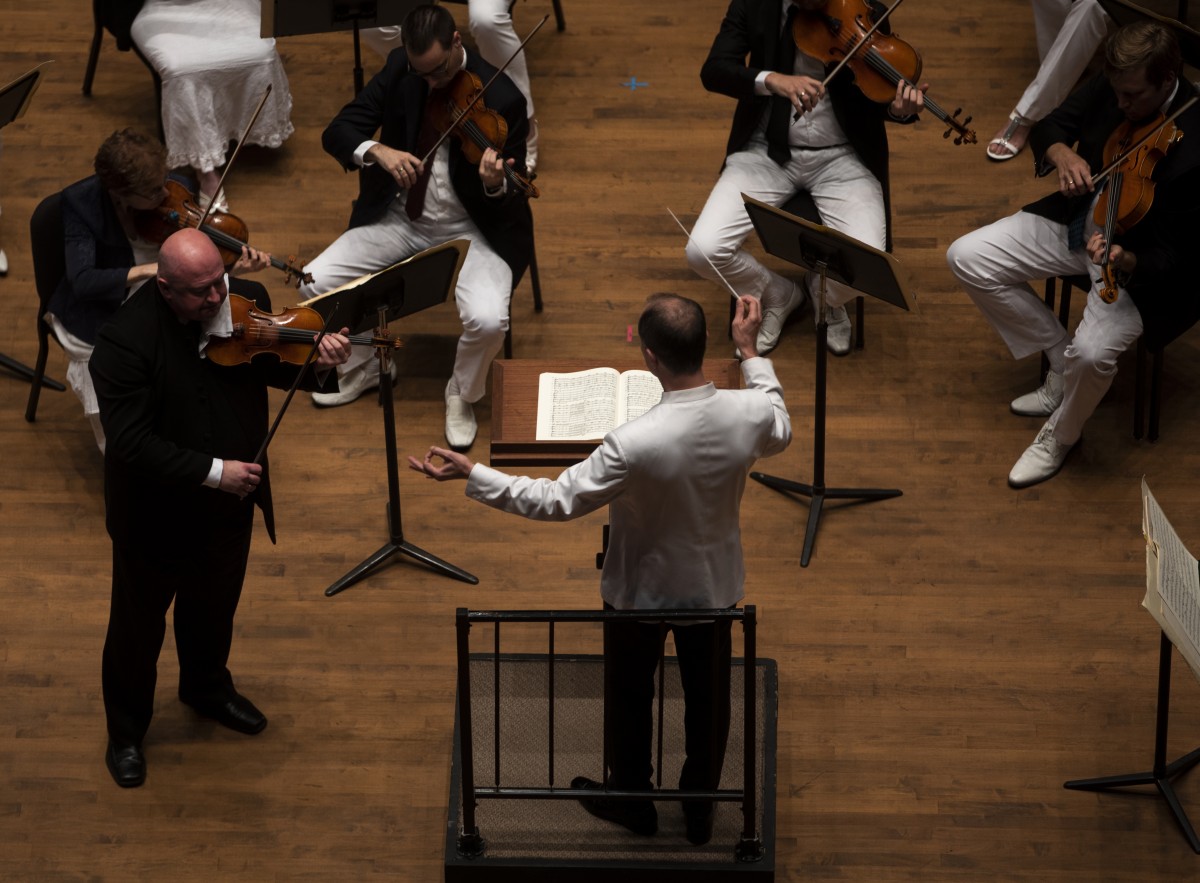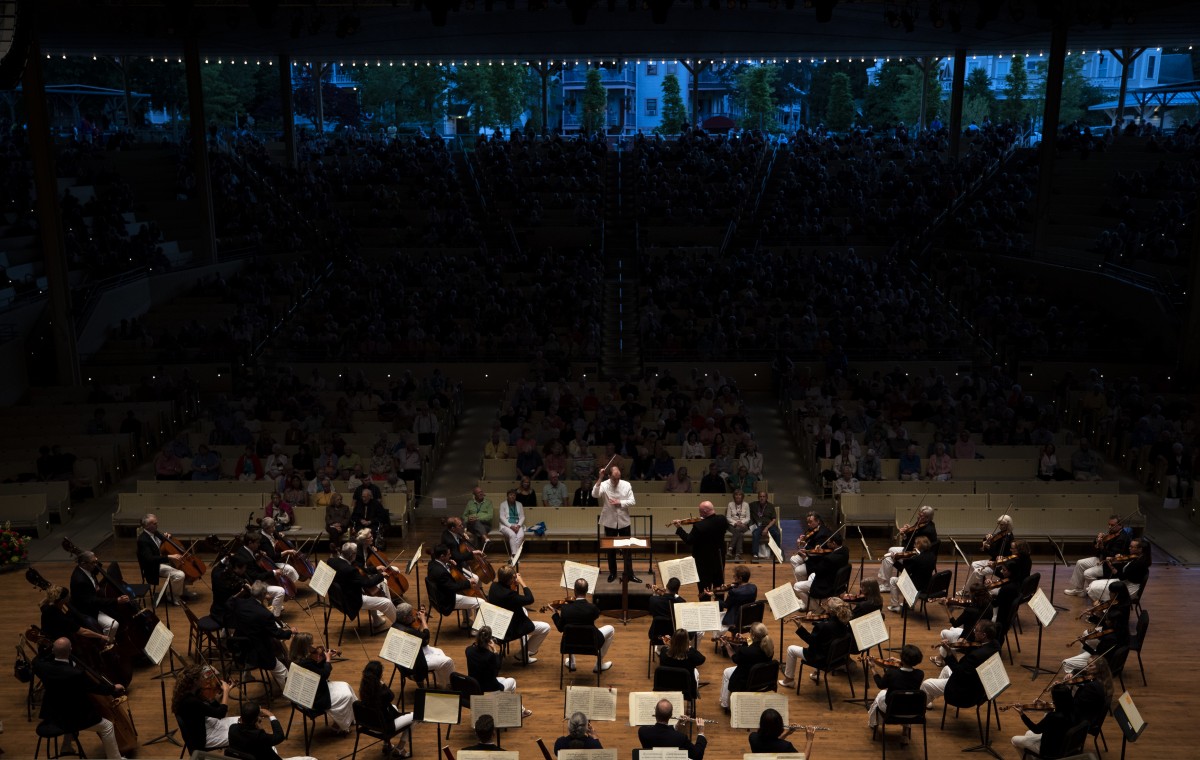Review by Andrew Druckenbrod
When the new Chautauqua Amphitheater “debuted” last season, many ears were listening as much to the performances as to how unamplified sound resonated within it. In particular were the acousticians who knew, as many did, that it takes a few years to “tune” a new hall. With feedback from performers and others, changes were made for the 2018 Chautauqua Symphony Orchestra’s season, which opened Thursday night with a program of Brahms’ Violin Concerto in D, with soloist Ilya Kaler, and Dvořák’s Symphony No. 9, “From the New World.”
A major aspect of the plan was to place cushions on the main floor benches to absorb the power of the brass, which tended to overwhelm the strings last summer. Those of us who forget to bring seat pads applauded this decision before a note was even played. The strategy did succeed in putting the instruments on a more equal setting and lending the strings a fuller presence. Actually, the winds — especially the horns — benefited from the standpoint of tonal quality, not volume. Yet the balance was off at times. I was told the cushions also are meant to help rehearsals simulate way in which the audience soaks up sound. This means, then, that the onus is now on Music Director Rossen Milanov to adapt to the Amp. A hall can only be tweaked so much.
The issue is partly that Milanov favors refined phrasing, valuing grace and lightness. I prefer this aesthetic compared to the foot-on-the-pedal approach sometimes applied to the popular Dvořák Ninth. But he must figure out how to accomplish this when it the music hits the ears of the audience, not his. Too often, the vigor of the monumental works dissipated and the sound sat on stage. It’s not that the strings can’t be loud and full, because they were at times, but he didn’t ask for enough in the dramatic moments that called for it. For instance, after the exquisite opening, the strings’ unexpected punch of a motif was arresting. But in the body of the frst movement, the big moments, such as the tutti response to the horns exploding opening theme, did not have the needed contrast.
Milanov, however, crafted many lovely moments.
The woodwind themes were elegant in this movement and throughout the symphony. This includes the famous English-horn melody of the second movement — delivered with intriguing assertiveness.The dances of the scherzo dazzled, but the finale lacked heft. Simply put, the open air of the Amp calls for more forceful playing.
The violinist Kaler was a joy to hear in the Brahms. He tapped into an older style of playing, with subtle sliding into key notes and technically brilliant bowing. Here, Milanov’s restraint surely was meant to complement Kaler’s silvery, yet soft timbre. But the rather slow tempo of the opening movement, typically negotiated between conductor and soloist, occasionally left him exposed. Masterful dynamic contours — such a steadfast bow hand! — brought out the artistry of the owing solo in the opening movement. The oboist’s treatment of the second movement’s melody had a rounded, yet projecting tone. The finale was, in a word, fun.
Yes, the orchestra was at times like a multicolored kite with not enough wind behind it. But I am confident the adjustments will be made in the coming months and seasons and glad that Chautauquans consider a year or two a short period.
Guest Critic Andrew Druckenbrod is a lecturer in the Department of Music at the University of Pittsburgh and former classical music critic of the Pittsburgh Post-Gazette.




